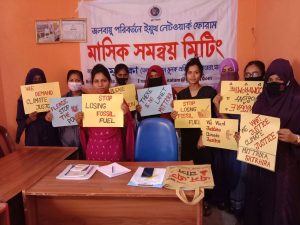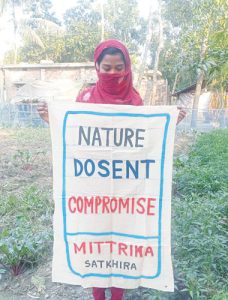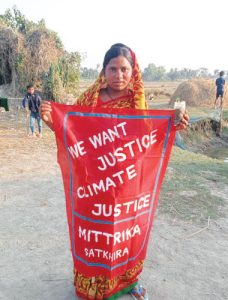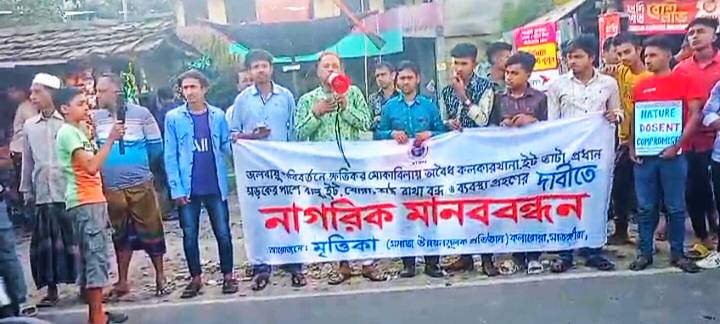Bangladesh has very long coastlines and coastal area covers 20,000 km2 area. In the coastal areas, aquifer conditions are not suitable for shallow tubewell and high salinity in both surface and roundwater are the main constraints for the development of a dependable water supply system. People in the coastal areas including ShyamanagarUpazila mainly depend on rain feedpond water and harvested rainwater for their domestic need. High salinity 36 problem, about percent households to have been found practice rainwater rainy harvesting in the season for drinking purpose. In most part of the country, people normally can have access to rainwater for about 6-8 months. However, the rainwater is not available throughout the year and need preservation for the yearlong use. Collection and storage of rainwater in the proper way and maintaining the quality of harvested rainwater (HRW) from bacteriological and other pollution especially during the lean period is a significant problem. Rainwater harvesting is one of the feasible options of fresh water sources in the coastal areas of Bangladesh and recently a lot of initiatives and programme were undertaken to promote and install rainwater harvesting systems both in the coastal and arsenic affected areas in Bangladesh. People perception and acceptance of rainwater awesting in a coastal area was assessed through a detail questionnaire survey, which provides useful information regarding the knowledge and awareness of key issues -elated to water supply, purpose of water uses and availability from the existing – aurces, peoples attitude towards rainwater harvesting and other alternative sources, ainwater harvesting technique and water usages, roof material of the houses of the : useholds and problems related to safe drinking water in the Shyamnagar area. On e other hand, some old rain water harvestings are stopped for lack of maintenance d some new rain water harvestings are need of Burigoalini, Munshigonj, Iswaripur and Anuliua Union of Shyamnagar.

In the coastal zone of Bangladesh, the extent of salinity may increase with new areas becoming affected. This will drastically reduce sources of fresh water for agriculture and human use. The people of the area drink pond water and suffer many kind of water related diseases and face dead. Higher temperatures along with increased salinity and more areas becoming waterlogged will seriously affect both agriculture and fisheries. Existing local infrastructure may also be jeopardized. Biodiversity of the coastal zones, including the Sundarbans, will be under great threat and many species of flora and fauna may become extinct. While sea level has not yet risen significantly as a result of global warming, the south west part of Bangladesh including Shyamnagar Upazila of Satkhira district is already exhibiting symptoms of what could occur due to rising sea levels. These include water logging, poor drainage through river system, siltation and saline intrusion. On the other hand, total Shyamnagar Upazila is out of sweet water. The people drink the surface water and suffer many kind of diseases. Previously, we have observed that some NGOs has established rain water harvesting. But lack of maintenance, the system has failed. From this situation, we have implemented a project on Enhanced the fresh drinking water through Rain water Harvesting in climate change.

In the project period, Mittrika have observed 12 Union of Shyamnagar Upazila of Satkhira district. But Burigoalini, Munshigonj, Iswaripur and Atulia Union is very vulnerable of drinking water. Present 137 rain water harvesting is remaining in the above Union. But 40 rain water harvesting are failed for lack of maintenance. Some points are necessary to build new rain water harvesting. So, we have chosen this area. We have repaired 40 Old rain water harvesting and built 03 New rain water harvesting.
Shyamnagar upazila in Satkhira district is an offshore area located closed to world ‘.argest mangrove Sundarban at the southwest part of the country. The area of Shyamnagar upazila is 759.94 sq. miles and a population of 3, 65,000 are living in this area. The main economic activities of the people are shrimp culture, agriculture and ’shing. The freshwater aquifer is rarely available and the geological condition is not suitable for groundwater development and shallow tube wells are not operative to apply domestic water in this region. Most of the rivers are tidal rivers, contain very gh salinity and turbidity and people normally used harvested rainwater either at rends or at the households or institutional big RCC reservoirs for their domestic ■ ..rposes like drinking and cooking. The monsoon rainfall starts earlier in this region ■. the end of April and continues upto September and the rainfall is much more higher it the average rainfall in Khulna region. In a recent report published in a national
daily stated that availability of fresh drinking water is one of the greatest problems in Shyamnagar upazila, especially during the summer. Many households collect drinking water from ponds, PSFs or community based RWH systems at a distance of 3 to 4 km. Many ponds water become highly turbid due to presence of small quantity of water and become unsuitable for domestic use, as a result, water borne and skin diseases are
very common in this area during dry season. In the g/L is also detected in tubewell water Drecent years, arsenic in excess of 50 in many parts of the study area, thus further worsening the availability of drinking water. There are about 111 numbers of RWH systems and 29 pond sand filters (PSFs) in this area, provided by various NGOs. There are about 1533 non-government and 54 government ponds in Shyamnagar upazila and people wants more government and NGOs initiatives to provide more PSFs and RWH systems in this area to augment the drinking water in this area. But maximum PSF are vanished and some old rain water harvestings are stopped for lack f maintenance and some new rain water harvestings are need of Burigoalini, lunshigonj, Iswaripur and Atuliua Union of Shyamnagar.
Rainwater harvesting is a recognized water supply technology in use in many . .eloping countries and rainwater harvesting has promoted since 1984 in the coastal ees in Bangladesh to a limited scale for drinking purpose. In the recent years from 8-20011, a lot of ^e been done by government nization and NGOs with the financial sport from international donor agencies international donor agencies promote and install several types of sehold and community based rainwater e sting systems both in the coastal and arsenic affected areas in Bangladesh as an alternative water supply sources other than -roundwater. Rainwater is available in adequate quantity in Bangladesh and greater density of normal yearly rainfall in the coastal areas is favorable for rainwater arvesting (RWH). Bangladesh Government has taken varieties of policies to develop are pure drinking water according the PRSP and Vision-2021. So, this project will ffect the good impact of the above PRSP and Vision-2021.

rainwater harvesting is one of the feasible options of fresh water sources in the . astal areas of Bangladesh and recently a lot of initiatives and programme were dertaken to promote and install rainwater harvesting systems both in the coastal and senic affected areas in Bangladesh. People perception and acceptance of rainwater ..n esting in a coastal area was assessed through a detail questionnaire survey, which provides useful information regarding the knowledge and awareness of key issues . ated to water supply, purpose of water uses and availability from the existing
urces, peoples attitude towards rainwater harvesting and other alternative sources, unwater harvesting technique and water usages, roof material of the houses of the
useholds and problems related to safe drinking water in the study area. A total of 8 persons randomly selected were interviewed, representing different groups of the
■- pie like teacher, farmer, caretaker and housewife. From the survey, it reveals that “.water harvesting is the most preferable source of water for drinking and cooking.
high portion of uses expressed their satisfaction with rainwater harvesting systems v their community and users involvement in operation and maintenance, which
eating high community interest and acceptance of rainwater harvesting in the Shamnagar are

